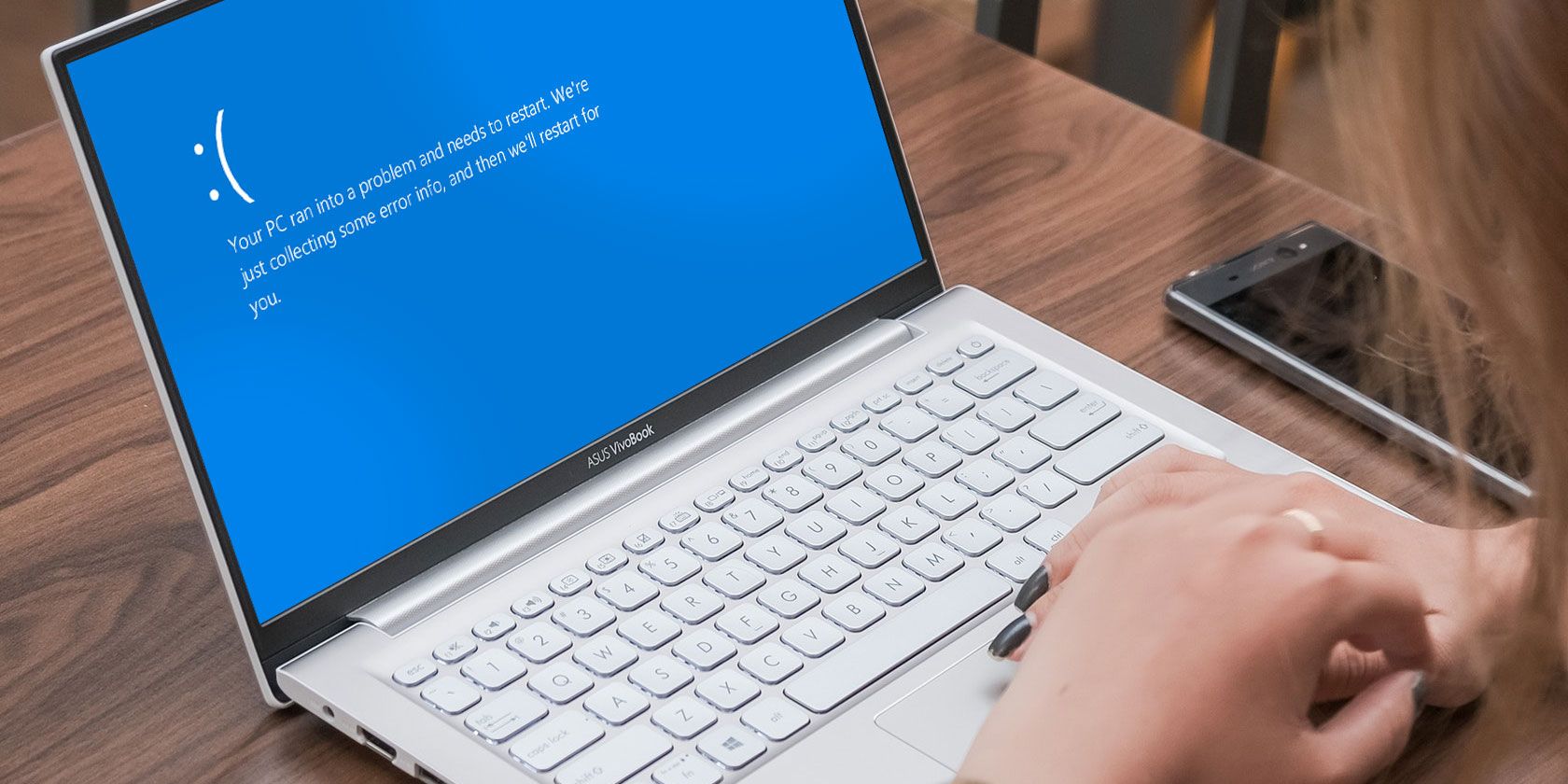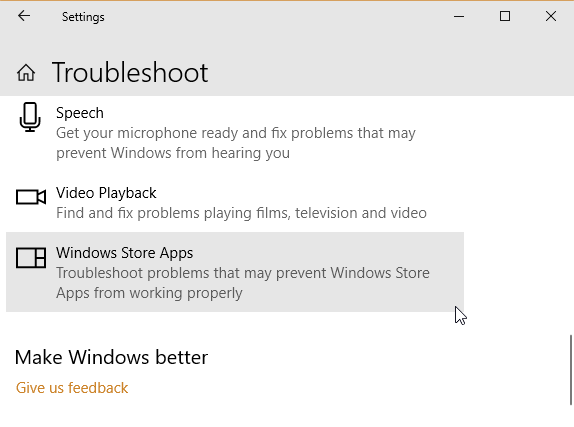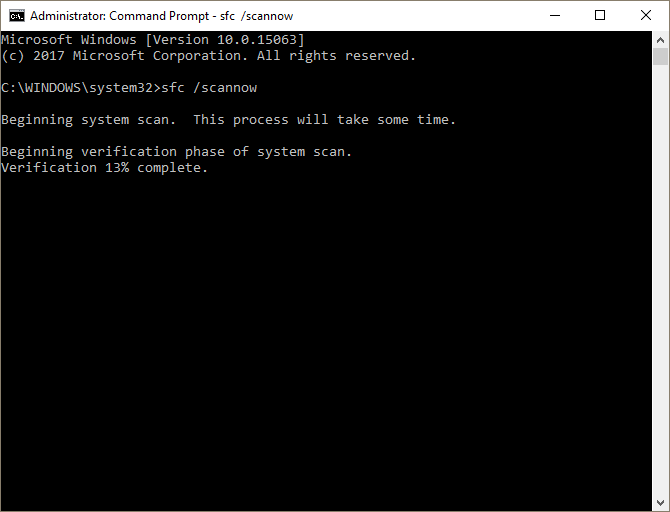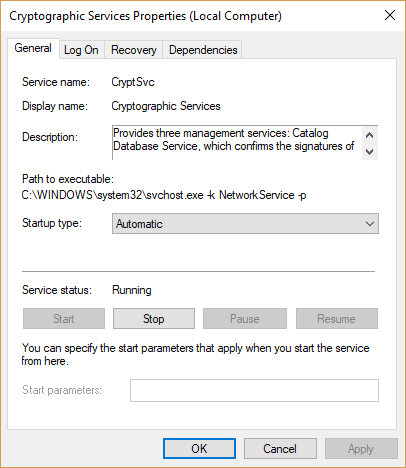The Windows 10 error code 0x8000ffff relates to Windows Update. The error code is known to affect the functionality of the Microsoft Store, too. After you update Windows 10 and head back to the Microsoft Store, the 0x8000ffff error indicates something is broken, somewhere.
The 0x8000ffff isn't so critical that it paralyzes your computer, and there are a few methods to fix the error. Let's take a look and troubleshoot the problem.
1. Use the Windows Store Apps Troubleshooter
Did you know that Windows 10 has a bunch of built-in troubleshooters? It is an extensive list of troubleshooters. One of the options is for the Microsoft Store.
To run the troubleshooter:
- Press Windows Key + I.
- Type Troubleshoot in the search bar.
- Scroll down the long list until you find Windows Store Apps, then select Run the troubleshooter.
Follow the on-screen instructions to alleviate your Microsoft Store 0x8000ffff error.
2. Clear the Microsoft Store Cache
Another quick fix for 0x8000ffff errors is to clear the Microsoft Store cache.
- Press Windows Key + R to open Run
- Type wsreset.exe and click OK.
A blank Command Prompt window will open for about ten seconds. After which the Store will open itself.
If that didn't work, press Windows Key + R again. Enter this:
C:\Users\%USERNAME%\AppData\Local\Packages\Microsoft.WindowsStore_8wekyb3d8bbwe\LocalState
If there's a Cache folder already, rename it Cache.old. Then, whether it existed before or not, create a new folder called Cache. Finally, run the Troubleshooter as outlined above and it should detect and resolve the problem.
3. Reconfigure or Reinstall the Microsoft Store
You can reconfigure the Microsoft Store in an attempt to remove your 0x8000ffff error. To reconfigure the Microsoft Store:
- Type Powershell into your Start menu search bar, then right-click the best match and select Run as Administrator.
-
Copy and paste the following command:
powershell-ExecutionPolicy Unrestricted Add-AppxPackage-DisableDevelopmentMode-Register -
Now, do the same for this command:
Env:SystemRoot\WinStore\AppxManifest.xml
- Reboot your system.
Sometimes the reconfigure option isn't enough to clear the 0x8000ffff error. In that case, you can try a full Microsoft Store reinstallation. It doesn't take long!
- Type powershell into your Start menu search bar, then right-click the best match and select Run as Administrator.
-
Copy and paste the following command:
Get-AppXPackage *WindowsStore* -AllUsers | Foreach {Add-AppxPackage -DisableDevelopmentMode -Register "$($_.InstallLocation)\AppXManifest.xml"} - Close PowerShell, then reboot your system.
4. Run CHKDSK and SFC
CHKDSK is a Windows system tool that verifies the file system and with certain settings, fixes issues as it runs. You run CHKDSK from the Command Prompt, and it has a bunch of nifty features.
- Type command prompt in your Start menu search bar, then right-click the best match and select Run as administrator. (Alternatively, press Windows key + X, then select Command Prompt (Admin) from the menu.)
- Next, type chkdsk /r and press Enter. The command will scan your system for errors and fix any issues along the way.
If that doesn't work, you can run the Windows System File Check (SFC). System File Check is another Windows system tool that checks for missing and corrupt Windows system files. Sounds like CHKDSK, right? Well, SFC checks for Windows system files specifically, while CHKDSK scans your entire drive for errors.
But before running the SFC command, it is best to double-check that it is completely functional.
DISM stands for Deployment Image Servicing and Management. DISM is an integrated Windows utility with a vast range of functions. In this case, the DISM Restorehealth command ensures that our next fix will work properly. Work through the following steps.
- Type Command Prompt (Admin)in the Start menu search bar, then right-click and select Run as administrator to open an elevated Command Prompt.
- Type the following command and press Enter: DISM /online /cleanup-image /restorehealth
- Wait for the command to complete. The process can take up to 20 minutes depending on your system health. The process seems stuck at certain times, but wait for it to complete.
- When the process completes, type sfc /scannow and press Enter.
5. Delete Software Distribution Folder
Deleting your Software Distribution folder can jolt your Windows Update back into life, and remove your 0X8000ffff error along with it.
However, before continuing with this fix, please be aware that removing the contents of your Software Distribution folder does come with some side effects. Most notably, deleting the folder removes your Windows Update history and the next time you attempt to update your system, the process could take a few minutes longer.
- Type command in your Start menu search bar, then right-click the best match and select Run as Administrator. An elevated Command Prompt will appear.
- Enter net stop wuauserv
- Enter net stop bits
- Open a Windows Explorer window. Copy and paste C:\Windows\SoftwareDistribution into the address bar.
- Open the Software Distribution folder. Press CTRL + A to select all files, then Delete.
If you are unable to delete all of the files, reboot your computer, and run through the process again. Once you remove the files, reboot your system.
6. Check Your Cryptographic Service
The Windows Cryptographic Service has close ties to Windows Update and the Microsoft Store. If the Cryptographic Service isn't working or is switched off, Windows will not update and throws up a bunch of errors. The 0x8000ffff error is one of them.
- Type services in your Start menu search bar and select the best match.
- Browse to Cryptographic Services.
- Make sure that the service is set to start automatically.
- If the Cryptographic Service is turned off, select Start.
7. Repair a Network Problem
Some users report the 0x8000ffff error stemming from a network issue. You can use the Windows 10 integrated network repair troubleshooter to fix this, too.
To run the troubleshooter:
- Press Windows Key + I.
- Type troubleshoot network in the search bar.
- Scroll down and select Network troubleshooter, then follow the on-screen instructions.
If that doesn't work, try changing your DNS settings. Switching to an alternative DNS can sometimes resolve network-related issues.
- Type network in your Start menu search bar and select the best match.
- Select Change adapter options.
- Right-click your active connection and select Properties, then internet Protocol Version 4, then Properties.
- Select Use the following DNS server addresses, and enter 1.1.1.1 and 8.8.8.8. Press OK.
1.1.1.1 is a privacy-focused DNS, while 8.8.8.8 is the Google Public DNS.
8. Reset Windows 10 (Last Resort)
Okay, still tearing your hair out? Sometimes nothing other than a Windows 10 Reset will fix your problem. Windows 10 Reset replaces your system files with a completely fresh set of files and theoretically clears lingering issues relating to the Memory Management error while keeping the majority of your important files intact.
Head to Settings > Update and Security > Recovery, then under Reset this PC select Get started.
Your system restarts as soon as you hit the button, so make sure you to back up any critical files beforehand. Your system will restart, then you may select Keep my files or Remove everything.
Error Code 0x8000FFFF Solved!
One of these or a combination of the seven fixes should remove your 0x8000ffff error and let you back in the Microsoft Store. I hope you don't have to reach for the eighth option, Reset Windows 10. That said, it is handy as an absolute last resort.
Getting an "Unexpected Store Exception" error on Windows? We can help. Got other Microsoft Store issues? Check out ways to fix your Microsoft Store issues.




